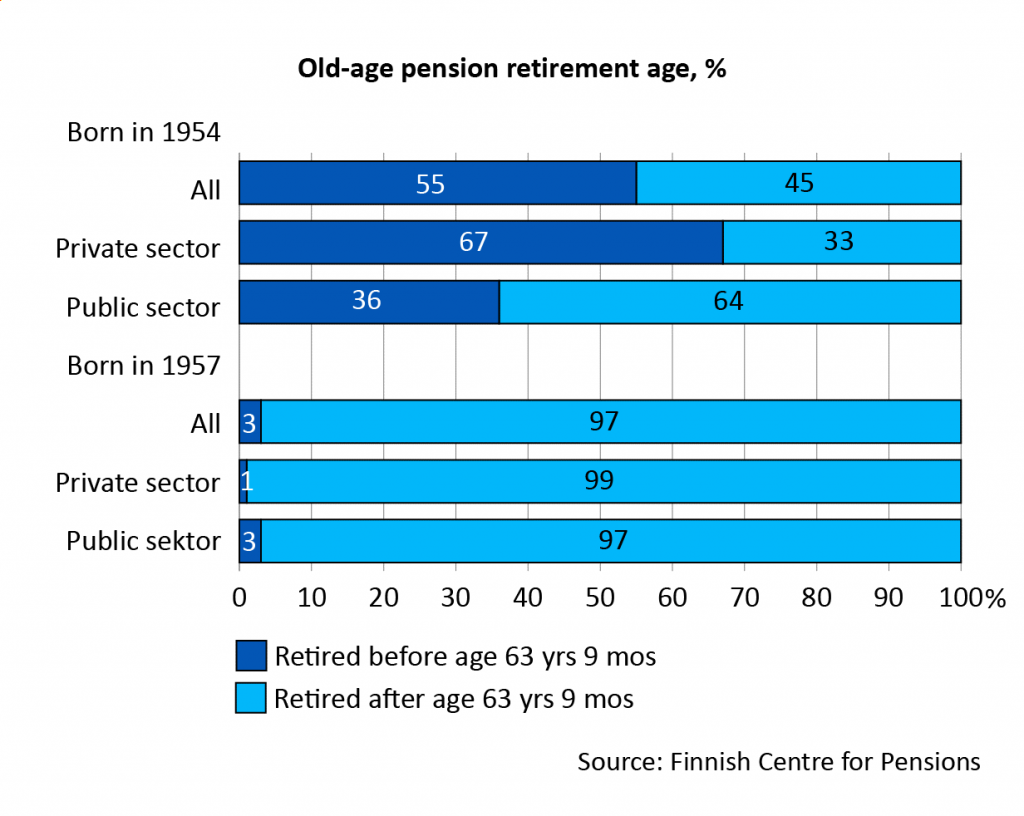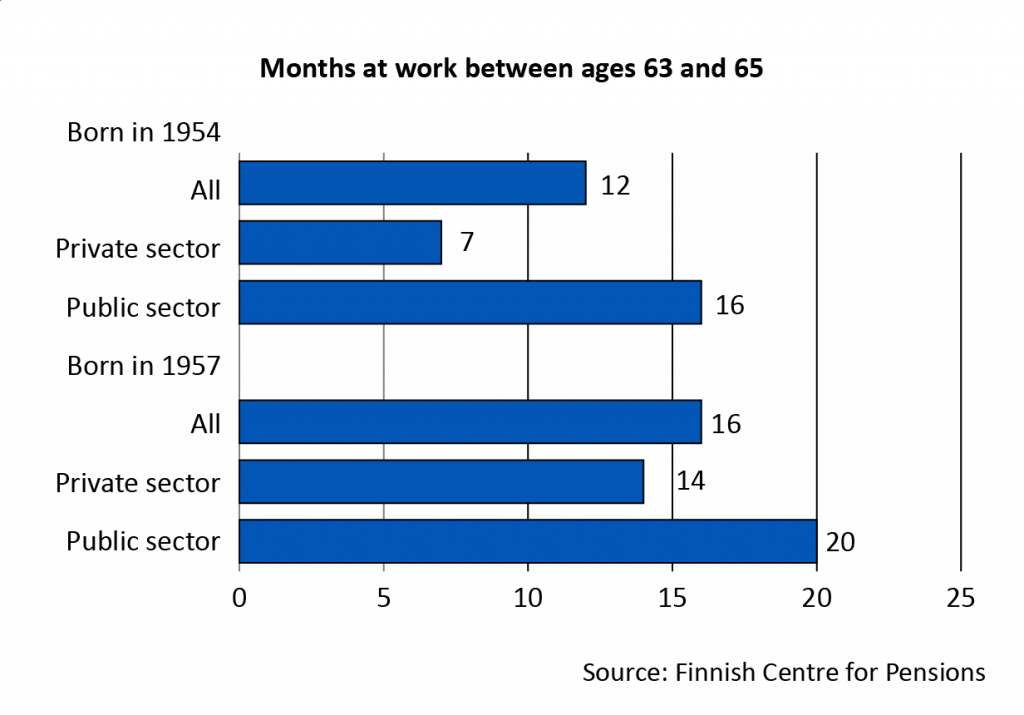2017 pension reform successful – retirement clearly deferred

A recent study by the Finnish Centre for Pensions shows that retirement has been deferred clearly, particularly in the private sector. Working after age 63 has also increased significantly, again particularly in the private sector. The gradual increase of the retirement age was agreed on in connection with the 2017 pension reform.
The new study shows that the pension reform’s goal of deferred retirement seems to have been successfully achieved.
The study focused on persons born in 1954–1957 who have retired on an old-age pension from work. For those born in 1954, the lowest retirement age is 63 years and for those born in 1957, it is 63 years and nine months.
More than half of those born in 1954 retired before turning 63 years and nine months while practically all of those born in 1957 will retire after that age.
“The change has been notably larger in the private than in the public sector since nearly 70 per cent of those born in 1954 who worked in the private sector retired before turning 63 years and nine months”, says Economist Satu Nivalainen (Finnish Centre for Pensions).
Of those born in the public sector, around 40–50 per cent have had a higher individual retirement age than the lowest retirement age, which seems to significantly steer the transition to retirement. The effective retirement is higher in the public sector also for other reasons.

People work longer
Working lives have also been extended due to the rising retirement age, although at a slower pace than that at which the retirement age rises.
“This is significant particularly in the private sector since, following the 2005 pension reform, the effective retirement age did not rise and the working lives of 63–68-year-olds did not extend at all in the private sector. In this respect, the 2017 pension reform has successfully raised the effective retirement age”, Nivalainen assesses.

Share of people retiring at age 65 or older increased
As the retirement age has increased by three months per age cohort, a larger share of a cohort has retired at a later age than the previous cohort. The change is seen not only in retirement at the lowest retirement age but also in the fact that people retire at an increasingly older age. For example, the share of persons retiring at age 65 or older has grown.
“The corona pandemic may have affected the timing of retirement, which makes it more challenging to assess the effects of the 2017 pension reform”, Senior Researcher Ilari Ilmakunnas (Finnish Centre for Pensions) points out.
The number and share of persons retiring on a partial disability pension has grown
Following the 2017 pension reform, it has been possible to retire on a disability pension also after the age of 63. Since the upper age limit for retirement on a disability pension is linked to the gradually rising retirement age, the number of persons retiring on a disability pension after age 63 will also increase gradually.
After the pension reform, the number of persons retiring on a partial disability pension has also increased among the 60–62-year-olds, but the number of persons retiring on a full disability pension has remained unchanged.
“The number of persons aged over 60 who retire on a partial disability pension has grown already for a while now. The change following the pension reform partly reflects this development”, explains Senior Researcher Mikko Laaksonen (Finnish Centre for Pensions).
